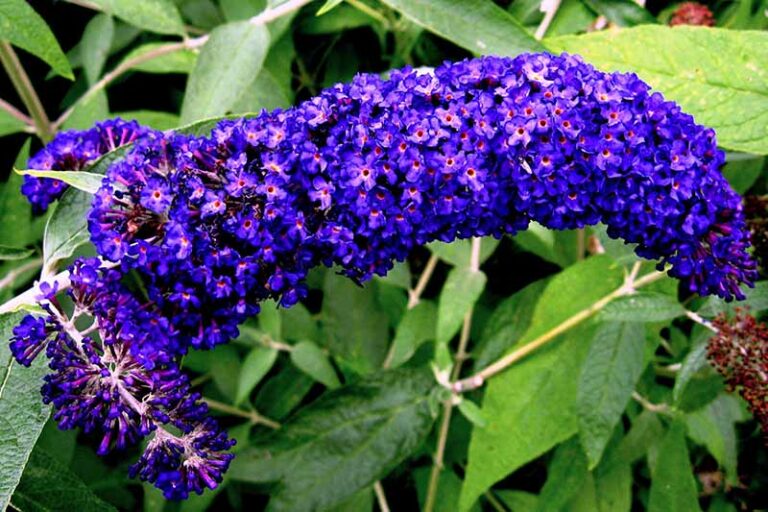Welcome to the enchanting world of the Butterfly plant, a captivating botanical wonder that effortlessly lives up to its name. Also known by its botanical name, Gaura lindheimeri, this graceful perennial beauty originates from North America, adding a touch of wild charm to gardens worldwide.
With its slender stems adorned with delicate, fluttering blossoms resembling ethereal butterflies (somewhat similar to Lavenders), it’s no wonder this plant steals hearts wherever it grows. The Butterfly plant is surprisingly low-maintenance, making it a delightful choice for both novice and experienced gardeners alike. So, let’s delve into the secrets of this delightful plant and discover how to nurture its everlasting charm.
Common Butterfly Bush varieties:
- Cephalanthus Sugar Shack – Buttonbush.
- Heptacodium Temple of Bloom – Seven-Son Flower.
- Aquilegia canadensis – Red Columbine.
- Buddleia ‘Miss Molly’ – Butterfly Bush.
- Diervilla Kodiak Orange – Bush Honeysuckle.
- Buddleia Pugster Amethyst – Butterfly Bush.
- Buddleia Pugster Blue – Butterfly Bush.
Care
Delighting gardeners with its mesmerizing allure, the Butterfly bush is a graceful and resilient addition to any landscape. With its vibrant blossoms that attract fluttering visitors, this plant’s requirements for light, soil, water, and temperature play pivotal roles in ensuring its flourishing growth.
- Soil: Adaptable and undemanding, this plant thrives in average, well-drained soil with moderate moisture levels. A soil pH ranging from 6.0 to 7.0 (slightly acidic to neutral) offers the perfect foundation for its roots to anchor and its blooms to blossom.
- Light: The Butterfly bush is a sun worshipper, thriving best in abundant sunlight, soaking up at least six hours of it daily. Placing it in shady spots could lead to an unhealthy, scraggly appearance, as this beauty longs for the warmth of the sun to blossom and flourish.
- Water: Maintaining a balanced watering routine is key, as the Butterfly bush favors a medium-moisture environment. Avoid extremes, as this plant isn’t fond of droughts or waterlogged soils that hinder proper drainage. Providing around 1/2 inch of weekly water, either through natural rainfall or irrigation, will keep this beauty content and flourishing.
- Temperature: Happily gracing hardiness zones 5 to 9, the Butterfly bush displays its tenacity. In zones 5 and 6, it may retreat to ground level during winter, only to emerge stronger in the spring. A resilient spirit, indeed!
Propagation
Propagating the butterfly bush is a breeze, but the method depends on the type you have. If it’s a fertile variety, collecting seeds from its heads allows easy replanting.
For sterile cultivars, opt for rooting branch cuttings: take a 4- to 6-inch segment, dip it in rooting hormone, and plant it in a mix of peat moss and perlite. Keep it moist and in a bright spot until roots form, usually in 3 to 6 weeks.
Alternatively, let the butterfly bush self-seed or sow purchased seeds directly in the desired location for quick germination and growth. Happy gardening!
Pruning
Pruning your butterfly bush is best done during late winter to early spring to avoid freezing and splitting of the hollow stems. Since these bushes bloom on new wood, ample sunlight ensures abundant summer blossoms after spring pruning.
Pruning annually is unnecessary, but many gardeners do so to stimulate new growth and more flowers. Drastically cutting back to twelve or twenty-four inches in height is well-tolerated, encouraging rapid fill-ins and blooms. Remove spent blooms throughout the summer for continuous growth.
Common Pests
Frequently Asked Questions
Yes, deadheading a butterfly bush is generally a good practice and can benefit the overall health and appearance of the plant. Deadheading refers to the removal of spent or faded flowers from the plant.
Why is my butterfly bush turning brown?
There are several potential reasons why your butterfly bush (Buddleia) may be turning brown:
- Watering issues: Overwatering or underwatering can stress the plant and lead to browning leaves. If the soil is consistently waterlogged, it can suffocate the roots and cause root rot, leading to brown and wilting foliage. On the other hand, insufficient water can result in drought stress and leaf browning.
- Frost or cold damage: Butterfly bushes are generally hardy, but extreme cold temperatures or frost can damage the plant, causing leaves to turn brown and die back.
- Pest or disease infestations: Insect pests like spider mites or diseases such as powdery mildew can attack butterfly bushes, causing leaf discoloration and browning.
Will Butterfly bush cuttings root in water?
Yes, if you put your cuttings in water, they will grow roots pretty quickly.
Is Butterfly Bush toxic to pets?
Butterfly bushes are generally regarded as non-toxic to pets.
What is the difference between butterfly bush and butterfly weed?
Though both luring butterflies and pollinators, Butterfly weed (Asclepias tuberosa) and butterfly bush are distinct species. Butterfly weed, native to North America, boasts orange or yellow clustered flowers and reaches around 3 feet in height. It’s cold-hardy, fitting for zone 3, and a non-invasive option for native plant enthusiasts.


